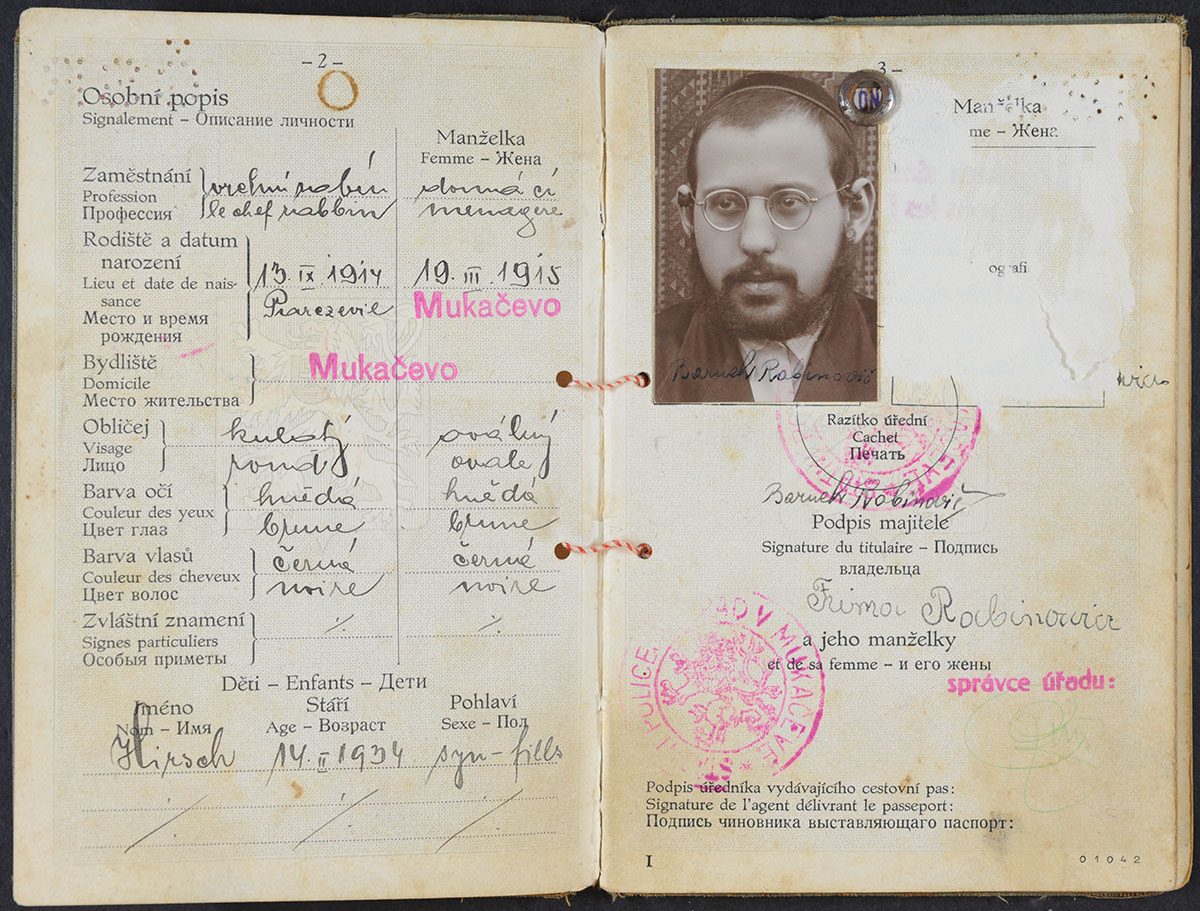Rabbi Baruch Yehoshua Yerachmiel Rabinowitz
Baruch Rabinowitz was born in 1914 in Siedliszcze, Poland, to a family of admorim. In 1933, he married the only daughter of the Admor of Munkács, Chaya Frima Rivka. Thousands came from across Europe and overseas for the wedding, which was given widespread media coverage and turned into the largest public event the town had ever witnessed.
After the passing of Rabbi Chaim Elazar Shapira in 1937, Baruch Rabinowitz was appointed Chief Rabbi and Admor of the Munkács Hasidim. He devoted his time and addresses to the "Darchei Teshuva" Yeshiva, and was active in public affairs.
In 1941, Rabbi Rabinowitz, a native Pole, was deported with his oldest son and thousands of other Jews without citizenship to Kamenets-Podolsk. While crossing the Polish border, they found a chance to flee, and after a while arrived back in Munkács. After it became clear that staying in the town had become too dangerous, they went to Budapest, where the Rabbi worked to help Jewish refugees from Poland and to save the lives of other rabbis. As he was also a refugee, and after he heard reports of the mass murder of Jews, he changed his outlook and decided to immigrate to Eretz Israel.
At the end of February 1944, before the German invasion of Hungary, Rabbi Rabinowitz left for Eretz Israel with his family, causing all contact with his disciples to cease. In 1947, Rabbi Rabinowitz was appointed Chief Rabbi of Sao Paolo in Brazil. He later returned to Israel as Chief Rabbi of Holon, and then moved to Petach Tikva, where he established his Beit Midrash. He wrote the books Divrei Nevonim on the Torah and Binat Nevonim on the Holocaust.
In 1960, the Munkács Hasidim who had survived the Holocaust appointed the son of Rabbi Baruch Yehoshua Rabinowitz, Yehuda Leib Rabinowtz, as Admor and Head of the Munkács Beit Din in Brooklyn, New York.
Rabbi Baruch Yehoshua Rabinowitz passed away in 1997. He was buried in the Segula Cemetery in Petach Tikva.

